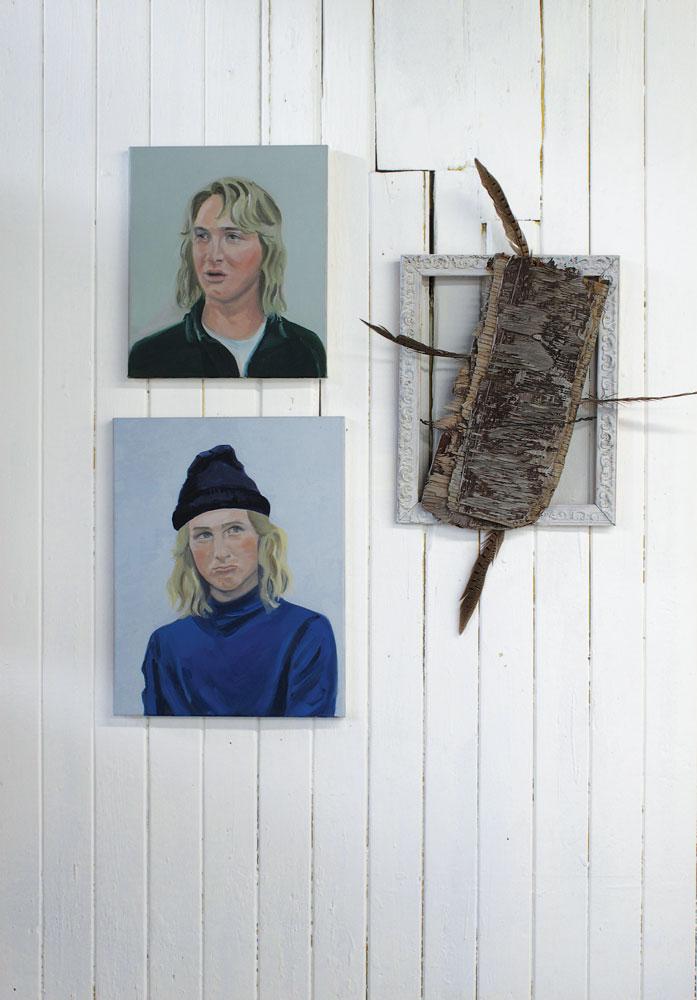Among the many stops at the 2012 edition of Vancouver’s Swarm, the official opening of the city’s artist-run-centre season, was “Shannon Oksanen and Valérie Sonnier: In Search of Lost Time” at the peripatetic UNIT/PITT Projects (now located in Chinatown). Taking its title from the most recent—and most literal—translation of Marcel Proust’s seven-volume À la recherche du temps perdu, the exhibition included films, driftwood sculptures, drawings and paintings by Oksanen and Sonnier, artists for whom time is either a place one has left behind but is doomed to revisit (Sonnier), or one best explored through the imagination (Oksanen). Artist Myfanwy MacLeod curated the exhibition, and her thoughts on its themes are included in an accompanying three-volume set co-published by Publication Studio Vancouver and UNIT/PITT.
Like some other Vancouver galleries, UNIT/PITT is small enough for visitors to view its exhibitions from the door. While this accords with Swarm’s tendency to attract art-curious looky-loos, MacLeod’s curation is as notable for its placement of the work as for the viewing paths it suggests (she majored in sculpture, and it shows). And so we are lured in, first to Sonnier’s Super 8-mm black-and-white film Des pas sous le neige (2011), a ghost story set in the artist’s family home, before noticing to its left three portraits of Sean Penn in his role as the SoCal stoner-surfer Jeff Spicoli in Amy Heckerling’s Fast Times at Ridgemont High (1982).
Those familiar with Oksanen’s work will recognize the cramped hand behind the Spicoli portraits (2012). For that is Oksanen’s style: taking those we have come to know through film and magazine ubiquity (Nana Mouskouri, Elvis Presley) and, like the enamoured fan, tracing “her” subjects before applying their makeup. This is by no means a negative critique, but an instance where the known and the sought-after create, through difference, a third face, one as haunting as the ghost that appears—and disappears—between the edits of Sonnier’s film. A similar effect can be found on the wall opposite, with Sonnier’s Entre chien et loup (2012), where the artist’s childhood home is drawn in tones so dark the viewer has no choice but to invent the light with which to see it.
To the far left of Sonnier’s drawing is Oksanen and Scott Livingstone’s The Vanishing Point (2001), a Super 8mm colour film (like Sonnier’s, transferred to video and shown on a monitor) that has a surfboard bobbing in the waters of an empty West Coast beach while an instrumental (singer-less?) surf band supplies a plaintive score. I have seen this film in group exhibitions, but only here, in relation to Sonnier’s haunting film, has it found a kindred spirit. Indeed, the ghost that appears in Des pas sous le neige is the absence of the surfer (and the singer?) in The Vanishing Point.
In one of her essays, MacLeod writes, “Valérie Sonnier’s work takes as its starting point an understanding of time that is bound by both history and memory. Shannon Oksanen’s work on the other hand looks at time as a construct or fiction and as such ours to waste.” How true. But what accounts for these tendencies? Sonnier was born and raised in France and is a citizen of the Old World—someone who, like all Europeans, is reminded of history at every turn. Oksanen, on the other hand, was born and raised in North America, where the American Dream includes, among its promised rewards, leisure time, in which we are free to generate new dreams—disposable dreams, those we do not have to realize in order to be haunted by them.
This is a review from the Winter 2013 issue of Canadian Art. To read more from this issue, visit its table of contents.









